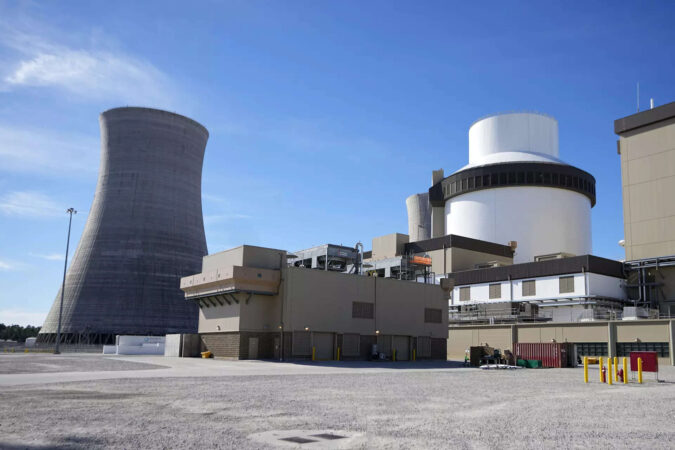WASHINGTON: Eight US companies developing nuclear fusion energy will receive $46 million in taxpayer funding to pursue pilot plants attempting to generate power from the process that fuels the sun and stars, the Department of Energy said on Wednesday.
Generating more energy from fusion reaction than goes into it has eluded scientists for decades. But more than 30 companies around the world are trying to generate power from fusion, which could one day help the world slash emissions linked to climate change, without producing long-lasting radioactive waste.
Fusion occurs when the nuclei of two light atoms such as hydrogen, heated to extreme temperatures, fuse into one heavier nucleus releasing vast amounts of energy.
The Energy Department‘s Milestone-Based Fusion Development Program hopes to help develop pilot-scale demonstration of fusion within a decade.
“The Biden-Harris Administration is committed to partnering with innovative researchers and companies across the country to take fusion energy past the lab and toward the grid,” Energy Secretary Jennifer Granholm said in a release.
The awardees are:
-Commonwealth Fusion Systems
-Focused Energy Inc
-Princeton Stellarators Inc
-Realta Fusion Inc
-Tokamak Energy Inc
-Type One Energy Group
-Xcimer Energy Inc
-Zap Energy Inc
The funding, which comes from the Energy Act of 2020, is for the first 18 months. Projects may last up to five years, with future funding contingent on congressional appropriations and progress from the companies in meeting milestones.
Looking to launch fusion plants that use lasers or magnets, private companies and government labs spent $500 million on their supply chains last year, according to a Fusion Industry Association (FIA) survey.
They plan to spend about $7 billion by the time their first plants come online, and potentially trillions of dollars mainly on high-grade steel, concrete and superconducting wire in a mature industry, estimated to be sometime between 2035 and 2050, the survey said.
Generating more energy from fusion reaction than goes into it has eluded scientists for decades. But more than 30 companies around the world are trying to generate power from fusion, which could one day help the world slash emissions linked to climate change, without producing long-lasting radioactive waste.
Fusion occurs when the nuclei of two light atoms such as hydrogen, heated to extreme temperatures, fuse into one heavier nucleus releasing vast amounts of energy.
The Energy Department‘s Milestone-Based Fusion Development Program hopes to help develop pilot-scale demonstration of fusion within a decade.
“The Biden-Harris Administration is committed to partnering with innovative researchers and companies across the country to take fusion energy past the lab and toward the grid,” Energy Secretary Jennifer Granholm said in a release.
The awardees are:
-Commonwealth Fusion Systems
-Focused Energy Inc
-Princeton Stellarators Inc
-Realta Fusion Inc
-Tokamak Energy Inc
-Type One Energy Group
-Xcimer Energy Inc
-Zap Energy Inc
The funding, which comes from the Energy Act of 2020, is for the first 18 months. Projects may last up to five years, with future funding contingent on congressional appropriations and progress from the companies in meeting milestones.
Looking to launch fusion plants that use lasers or magnets, private companies and government labs spent $500 million on their supply chains last year, according to a Fusion Industry Association (FIA) survey.
They plan to spend about $7 billion by the time their first plants come online, and potentially trillions of dollars mainly on high-grade steel, concrete and superconducting wire in a mature industry, estimated to be sometime between 2035 and 2050, the survey said.
